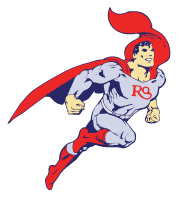No one can deny the romanticism attached to steam locomotives. They are still part of the popular culture today and will hold their place for a very long time. Those who have worked with steam locomotives will tell you that they are much more than machinery. They take a life and personality of their own.
It should come as no surprise that the age of steam is still a very popular choice among modelers today. Let’s take a look at the five most essential scenic elements to include for a layout designed for steam.
Roundhouses
Roundhouses are one of the most iconic elements of the steam era. Largely obsolete today, they once held very significant importance in all the major steam operations. While their main function was storage, they were also used for heavy maintenance work as well. Today, just a handful of roundhouses remain in service, and many have been converted into event venues, industrial spaces, and museums.
Coaling Towers
Another iconic item of the steam locomotive era was coaling towers. Because steam was generated from boiling water, and the water was bodied by burning coal. Therefore, coaling towers were crucial to keeping the steam engines up and running. These were very imposing infrastructures that could be seen from many miles away. Coal was delivered by hopper cars, and these cars would empty in the pit below. From here, coal lifting was done using a pulley system into the silos. Once a locomotive needed refilling, it would just go underneath, and the silos would empty into the tender.
Today, coaling towers are a thing of the past, but some still remain in situ thanks to their sturdy construction. Why are they there? Because it is just too expensive to dismantle them.
Water Towers
Water towers are the most recognizable features of the steam era. They were also the most important ones. Steam locomotives need water for safe operation. If there is no proper water supply, a locomotive could easily overheat, and there is a risk of boiler explosion. In the early days, water stops were required every few miles. For this reason, every small town depot featured a water depot. As the locomotives grew in size, their water storage capacity also grew. They allowed the railroads to decrease the number of water stops and most trains started traveling 100 miles or even more without needing a stop.


